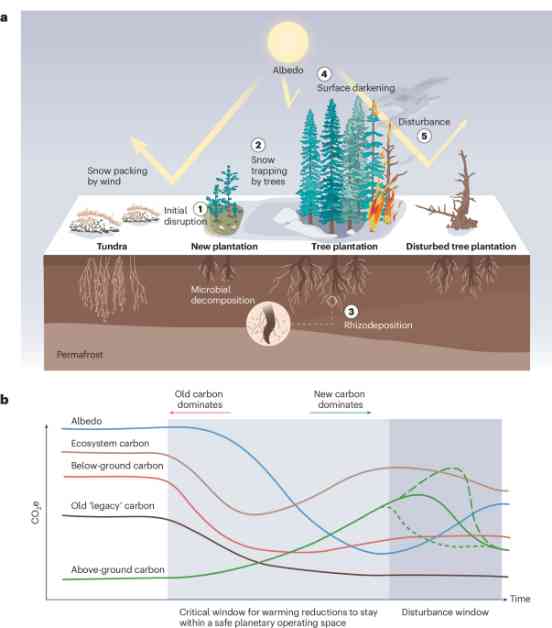Planting trees in northern high latitudes has been a proposed solution to mitigate climate change. However, recent research suggests that this may not be as effective as previously thought. Studies have shown that there are unintended consequences of planting trees in treeless ecosystems in an effort to combat climate change.
One study, published in the Journal of Ecology, highlighted the potential negative impacts of planting both native and non-native trees in these ecosystems. The conflation of reforestation with restoration is also a common issue, as outlined in a report in Science. Rangeland afforestation has been found to not be a natural climate solution, further complicating the idea of using trees to combat climate change.
Additionally, research has shown that the boreal forest in Canada has not experienced growth stimulation despite half a century of combined warming and CO2 fertilization. This challenges the notion that planting more trees will automatically lead to carbon capture. Furthermore, Arctic sea ice retreat has been found to fuel boreal forest advance, indicating a complex relationship between climate change and forestation efforts.
Governor Dunleavy of Alaska has signed carbon offset legislation, signaling a move towards more sustainable practices. Carbon forestry initiatives, such as those by Doyon, Limited, aim to address the carbon footprint of activities like tree planting. However, it is essential to consider the broader implications and potential trade-offs of these initiatives.
A study published in Nature Communications emphasized the importance of accounting for albedo change when identifying climate-positive tree cover restoration. Changes in surface albedo can offset the potential carbon sink from boreal forestation, highlighting the need for a holistic approach to climate mitigation strategies.
In conclusion, while planting trees in northern high latitudes may seem like a straightforward solution to climate change, the reality is much more nuanced. It is crucial to consider the unintended consequences, trade-offs, and broader impacts of such initiatives. Moving forward, a more comprehensive and integrated approach to climate action is needed to address the complex challenges posed by a changing climate.













